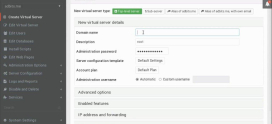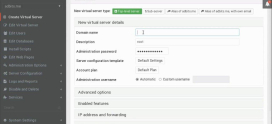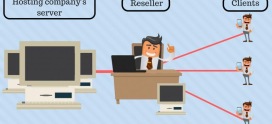
Step-by-Step Guide to Migrating from Apache to LiteSpeed in cPanel
Are you struggling to optimize your website’s performance? Have you been experiencing sluggish load times, frequent downtime, or frustrating server issues? If so, you’re not alone! Many website owners find themselves in the same boat, trying to strike a balance between reliable performance and resource management. It’s a bit like driving an old car that keeps stalling; you know there’s a better option out there. What if I told you there’s a way to speed things up and improve your online presence without the headaches? Enter LiteSpeed, a high-performance web server that’s gaining popularity among users looking to migrate from Apache. In this article, we’ll explore a step-by-step guide to migrating from Apache to LiteSpeed in cPanel, keeping things straightforward and clear for every skill level.
With this guide, you’ll feel more equipped to tackle the migration process, understanding not just how to make the transition but why it’s worth it. From boosting your site’s speed to enhancing security features, moving to LiteSpeed can be a game-changer for your website. So, let’s dig in and discover how you can make this switch smoothly, ensuring your website runs like a well-oiled machine!
What is LiteSpeed?
Before diving into the migration process, let’s first understand what LiteSpeed is and why it’s become a sought-after alternative to Apache. LiteSpeed is a high-performance web server designed to deliver exceptional speed and reliability. Think of it like upgrading your old, clunky car to a slick, modern ride—everything becomes faster and more efficient.
LiteSpeed excels in handling high traffic volumes, reducing resource consumption, and boosting website performance. Not only does it support PHP faster, but it also integrates features such as LiteSpeed Cache, which can significantly enhance loading times for dynamic websites. So, if you’re looking for a solution that minimizes downtime while maximizing your website’s capabilities, LiteSpeed is undoubtedly worth considering!
Why Migrate from Apache to LiteSpeed?
Performance Boost
One of the most compelling reasons to migrate is performance. LiteSpeed can serve static content up to six times faster than Apache, improving your site’s speed dramatically. This boost can lead to lower bounce rates and better user engagement—every website owner’s dream!
Security Advantages
Security is another critical factor when it comes to web hosting. LiteSpeed includes built-in features such as DDoS protection and advanced firewall rules to help safeguard your site against threats. With growing concerns about online safety, switching to LiteSpeed can give you peace of mind.
Enhanced Resource Management
This isn’t just about speed; it’s also about how efficiently your server uses resources. LiteSpeed’s architecture allows it to handle multiple requests simultaneously without consuming excessive memory. It’s like having a high-speed train instead of a crowded subway—benefiting more passengers (or website visitors!) with fewer breakdowns.
Preparing for Migration
Now that we’ve established the benefits, let’s prepare for your migration journey! A little preparation goes a long way. Here’s what you need to do:
1. Backup Your Data
Before making any major changes, always back up your existing setup. This step ensures that you can restore your site if anything goes wrong during the migration. You can use cPanel’s built-in backup tool for a straightforward backup process.
2. Check Compatibility
Not all environments are the same. Ensure that your current website content (like scripts, plugins, etc.) is compatible with LiteSpeed. This preparation can save you from potential hiccups after the migration.
3. Choose the Right LiteSpeed Version
LiteSpeed offers multiple versions, including the OpenLiteSpeed, which is free but lacks some premium features like caching. Assess your needs to choose the right version for your migration process.
Step-by-Step Guide to Migrating from Apache to LiteSpeed
Step 1: Install LiteSpeed
If your hosting provider offers LiteSpeed, look for an option in your cPanel to enable it. If you’re managing your server, you can install it via SSH or by following the provider’s instructions. Many hosting providers, like DarazHost, simplify this process significantly.
Step 2: Configure LiteSpeed
Once installed, navigate to your LiteSpeed WebAdmin console to configure settings. You’ll want to set up your server, including virtual hosts, modules, and SSL if applicable. It’s essential to replicate your Apache configuration as closely as possible.
Step 3: Migrate Content
Next, it’s time to migrate your website content. Since LiteSpeed is compatible with Apache configurations such as .htaccess files, this step should be relatively straightforward. However, review your configurations to ensure compatibility with the new server.
Step 4: Optimize Settings
LiteSpeed includes various optimization settings for caching and resource allocation. Explore these settings to maximize performance, especially if you’re running dynamic applications like WordPress, Joomla, or Drupal.
Step 5: Test Your Site
it’s crucial to test your site after migrating. Check for broken links, loading times, and overall functionality. You might even want to use online testing tools to get a sense of improved performance metrics.
Common Challenges During Migration and How to Overcome Them
Like any journey, migrating from Apache to LiteSpeed can have its bumps in the road. Let’s discuss some common challenges and how to best approach them:
Configuration Issues
If your site doesn’t look or act as it should, there might be unresolved configuration settings. Don’t rush through this step; double-check access permissions and rewrite rules, ensuring they align correctly with LiteSpeed’s structure.
Compatibility Problems
Incompatibility between plugins or themes might arise post-migration. Make an effort to keep your software updated and consider reaching out to your plugin developers for support if issues appear.
Performance Variability
After the migration, you may notice fluctuations in performance. Be patient and adjust your settings as needed. LiteSpeed offers a variety of caching options—experimenting can lead to the best results!
Ongoing Maintenance and Optimization
After successfully migrating to LiteSpeed, it’s not just a set-it-and-forget-it scenario. Ongoing maintenance is essential. Regularly check your server settings, apply updates, and monitor performance. Consider leveraging LiteSpeed’s built-in cache functionality to keep your site running smoothly.
FAQs
What is the primary difference between Apache and LiteSpeed?
The primary difference lies in performance and resource management. LiteSpeed is designed to handle thousands of simultaneous connections with less memory and offers superior speed compared to Apache.
Is LiteSpeed free?
LiteSpeed offers a free version called OpenLiteSpeed. However, to access full features and premium support, you may need to opt for a paid version.
Can I switch back to Apache if I don’t like LiteSpeed?
Yes, you can revert to Apache if necessary. Just ensure you have backups in place to prevent any data loss during the switch.
How long does the migration process take?
The duration can vary based on your website’s size and complexity, but most migrations can typically be completed in a couple of hours.
Will my website downtime occur during the migration?
While some downtime is possible during the migration process, it can be minimized by performing the switch during off-peak hours. Proper preparation will also greatly reduce downtime.
Conclusion
Switching from Apache to LiteSpeed can seem daunting, but with the right guidance, it can be a breeze! Equipped with this step-by-step guide, you’re now ready to take charge of your website’s performance. Remember, every migration is a learning experience, so don’t be afraid to reach out for help along the way As needed. The benefits of improved speed, security, and resource management make it a worthwhile investment for your online presence. By embracing LiteSpeed, you are not only enhancing your website’s performance but also setting it up for long-term success.
So, whether you’re a small business owner, a blogger, or an e-commerce site manager, taking the leap to migrate from Apache to LiteSpeed may be one of the best decisions you make for your website. Good luck with your migration journey, and here’s to your site running smoother and faster than ever before!









